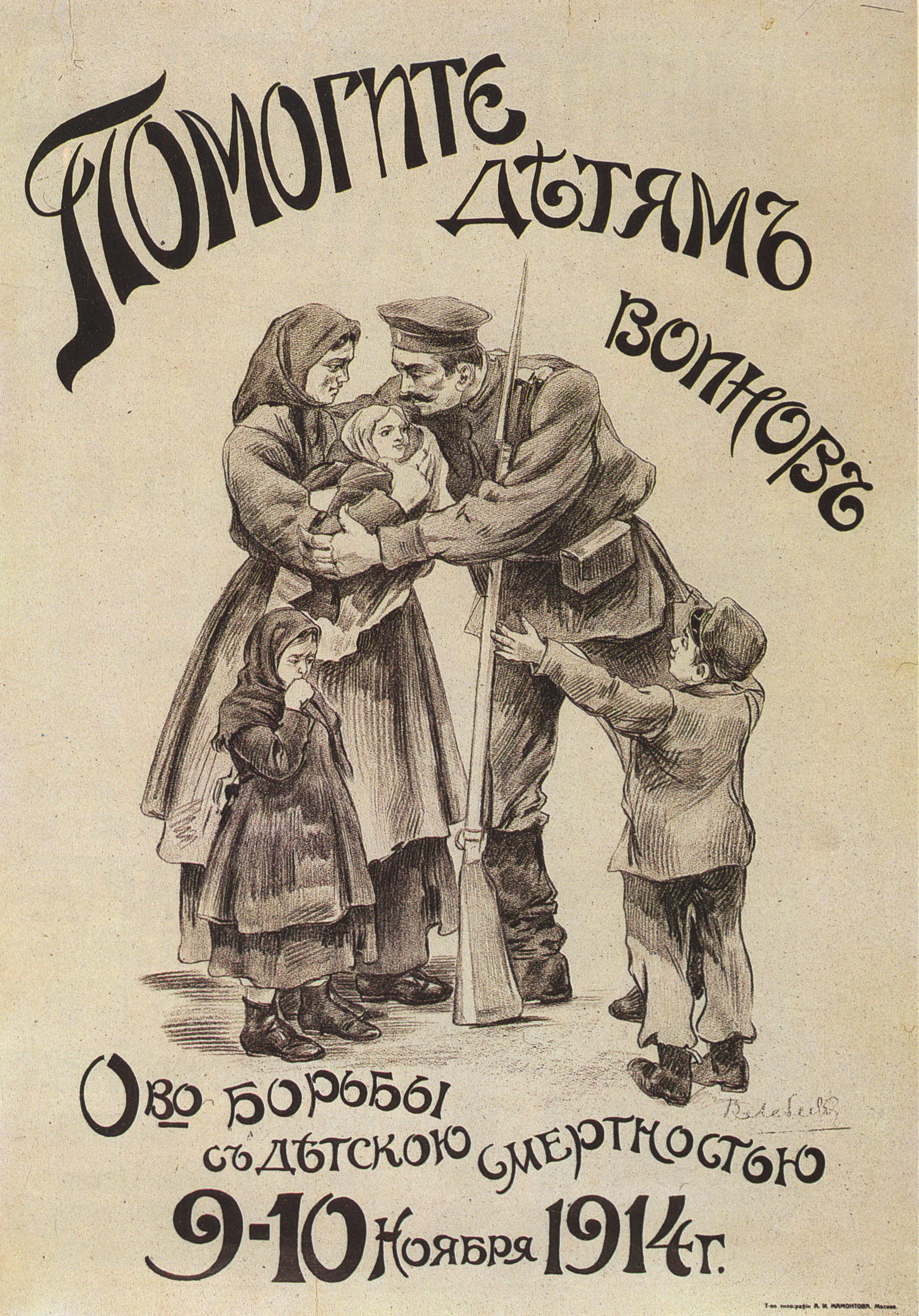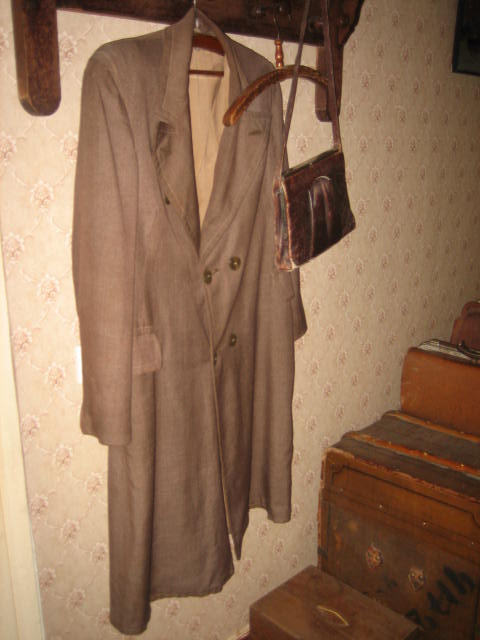|
Vladimir Lebedev (painter)
Vladimir Vasilyevich Lebedev (russian: Влади́мир Васи́льевич Ле́бедев; 26 May 1891 – 21 November 1967) was part of the Russian avant-garde: A painter, a political cartoonist and a poster artist, with an experimental style influenced by Russian folk art, ''lubki'', futurism, constructivism, suprematism, productionism and cubism. A pioneer in the field of children's illustration, he would later acknowledge his role in inventing a new illustrative style, created in the "language of cubism." Lebedev's most important contributions to children's literature were made in the 1920s, and some of his most ground-breaking work was created in collaboration with the poet Samuil Marshak, whom Maxim Gorky called "the founder of Russia's (Soviet) children's literature." Together, they published more than a dozen picture books, on topics both fanciful: ''Tale About a Foolish Mouse'' and instructive: ''How a Plane Made a Plane''. Raduga ("The Rainbow"), a renow ... [...More Info...] [...Related Items...] OR: [Wikipedia] [Google] [Baidu] |
Sarra Lebedeva
Sarra Dmitrievna Lebedeva (December 11 (23), 1892 – March 7, 1967) was a Soviet sculptor, mainly of portraits, but also of statuettes, figures for porcelain and delft ware. Life Born Sara Darmolatova into a wealthy Saint Petersburg family, Her elder sister was the writer and socialite Anna Radlova. Lebedeva was educated privately in her youth. She studied for a time at the School of the Society of for the Encouragement of the Arts in her native city before entering Mikhail Bernshtein's school in 1910; she became a sculptor two years later, studying with Leonid Sherwood from 1912 until 1914. During this time she also travelled to France, Germany, Austria and Italy, travels which introduced her to the work of the artists of the Italian Renaissance, of whom Donatello was to become a favorite. In 1914 she designed masks and reliefs for the Yusupov Palace while working with the sculptor Vasili Kuznetsov as a pupil and, later, assistant. After this she transitioned mainly to p ... [...More Info...] [...Related Items...] OR: [Wikipedia] [Google] [Baidu] |
Agitprop
Agitprop (; from rus, агитпроп, r=agitpróp, portmanteau of ''agitatsiya'', "agitation" and ''propaganda'', "propaganda") refers to an intentional, vigorous promulgation of ideas. The term originated in Soviet Russia where it referred to popular media, such as literature, plays, pamphlets, films, and other art forms, with an explicitly political message in favor of communism. The term originated in Soviet Russia as a shortened name for the Department for Agitation and Propaganda (, '), which was part of the central and regional committees of the Communist Party of the Soviet Union. Within the party apparatus, both agitation (work among people who were not Communists) and propaganda (political work among party members) were the responsibility of the ''agitpropotdel'', or APPO. Its head was a member of the MK secretariat, although they ranked second to the head of the ''orgraspredotdel''. Typically Russian agitprop explained the ideology and policies of the Communist Party ... [...More Info...] [...Related Items...] OR: [Wikipedia] [Google] [Baidu] |
Diktat
A diktat (german: label=from German, Diktat, ) is a statute, harsh penalty or settlement imposed upon a defeated party by the victor, or a dogmatic decree. The term has acquired a pejorative sense, to describe a set of rules dictated by a foreign power or an unpopular local power. The phrases "To impose its values" or "give orders" can be synonymous with giving a diktat. An example of firman or Royal Diktat was the one issued by Mughal Emperor Farrukhsiyar in 1717, exempting the British from the payment of customs duties in Bengal. Origins The term is from German, derived from the Latin past participle ''dictātum''. It arose from Dictatus Papae, which attempts to resolve the struggle of the priesthood and the Empire in the Holy Roman Empire. Historical use The term was first noted in 1922 by Wilhelm, Crown Prince of Prussia, regarding the Treaty of Versailles imposed on the defeated Germany. It was referred to as such because its terms were presented to Germany without allowing i ... [...More Info...] [...Related Items...] OR: [Wikipedia] [Google] [Baidu] |
Vladimir Lebedev (British Library - Public Domain) Violence - A-Worker-Sweeping-the-Criminals (born 1984), Russian freestyle skier
{{hndis, Lebedev, Vladimir ...
Vladimir Lebedev may refer to: * Vladimir Lebedev (artist) (1891–1967), Soviet painter and graphic artist *Vladimir Lebedev (politician) (born 1962), Russian politician *Vladimir Lebedev (skier) Vladimir Lebedev ( Russian: Лебедев Владимир Николаевич; born April 23, 1984, in Tashkent) is a Russian freestyle skier who competed at the 2006 Winter Olympics The 2006 Winter Olympics, officially the XX Olympic ... [...More Info...] [...Related Items...] OR: [Wikipedia] [Google] [Baidu] |
Nikolay Punin
Nikolay Nikolayevich Punin (russian: link=no, Никола́й Никола́евич Пу́нин; – August 21, 1953) was a Russian art scholar and writer. He edited several magazines, such as ''Izobrazitelnoye Iskusstvo'' among others, and was also co-founder of the Department of Iconography in the State Russian Museum. Punin was a lifelong friend and common-law husband of poet Anna Akhmatova who is famous for writing the poem ''Requiem''. Biography A key figure in the Russian art world Nikolay Punin was born in Helsingfors (now Helsinki), Grand Duchy of Finland, into the family of Nikolay Mikhaylovich Punin, a Medical Doctor of the Imperial Russian Army stationed in Helsingfors. Nikolay’s younger brother Leonid Punin was later to become a commander in the White armies. Young Punin moved to St. Petersburg and attended the classical gymnasium where he first met young student Anna Akhmatova. From 1907 to 1914, Punin attended the St. Petersburg University, studied hi ... [...More Info...] [...Related Items...] OR: [Wikipedia] [Google] [Baidu] |
Formalism (art)
In art history, formalism is the study of art by analyzing and comparing form and style. Its discussion also includes the way objects are made and their purely visual or material aspects. In painting, formalism emphasizes compositional elements such as color, line, shape, texture, and other perceptual aspects rather than content, meaning, or the historical and social context. At its extreme, formalism in art history posits that everything necessary to comprehending a work of art is contained within the work of art. The context of the work, including the reason for its creation, the historical background, and the life of the artist, that is, its conceptual aspect is considered to be external to the artistic medium itself, and therefore of secondary importance. History The historical origin of the modern form of the question of aesthetic formalism is usually dated to Immanuel Kant and the writing of his third Critique where Kant states: "Every form of the objects of sense is either ... [...More Info...] [...Related Items...] OR: [Wikipedia] [Google] [Baidu] |
Acmeist Poetry
Acmeism, or the Guild of Poets, was a transient poetic school, which emerged in 1912 in Russia under the leadership of Nikolay Gumilev and Sergei Gorodetsky. Their ideals were compactness of form and clarity of expression. The term was coined after the Greek word άκμη (''ákmē''), i.e., "the best age of man". The acmeist mood was first announced by Mikhail Kuzmin in his 1910 essay "Concerning Beautiful Clarity". The acmeists contrasted the ideal of Apollonian clarity (hence the name of their journal, '' Apollon'') to "Dionysian frenzy" propagated by the Russian symbolist poets like Bely and Vyacheslav Ivanov. To the Symbolists' preoccupation with "intimations through symbols" they preferred "direct expression through images". In his later manifesto "The Morning of Acmeism" (1913), Osip Mandelstam defined the movement as "a yearning for world culture". As a " neo-classical form of modernism", which essentialized "poetic craft and cultural continuity", the Guild of Poets place ... [...More Info...] [...Related Items...] OR: [Wikipedia] [Google] [Baidu] |
Vladimir Mayakovsky
Vladimir Vladimirovich Mayakovsky (, ; rus, Влади́мир Влади́мирович Маяко́вский, , vlɐˈdʲimʲɪr vlɐˈdʲimʲɪrəvʲɪtɕ məjɪˈkofskʲɪj, Ru-Vladimir Vladimirovich Mayakovsky.ogg, links=y; – 14 April 1930) was a Russian and Soviet poet, playwright, artist, and actor. During his early, pre-Revolution period leading into 1917, Mayakovsky became renowned as a prominent figure of the Russian Futurist movement. He co-signed the Futurist manifesto, ''A Slap in the Face of Public Taste'' (1913), and wrote such poems as "A Cloud in Trousers" (1915) and "Backbone Flute" (1916). Mayakovsky produced a large and diverse body of work during the course of his career: he wrote poems, wrote and directed plays, appeared in films, edited the art journal ''LEF'', and produced agitprop posters in support of the Communist Party during the Russian Civil War of 1917–1922. Though Mayakovsky's work regularly demonstrated ideological and patriotic support ... [...More Info...] [...Related Items...] OR: [Wikipedia] [Google] [Baidu] |
Futurism
Futurism ( it, Futurismo, link=no) was an artistic and social movement that originated in Italy, and to a lesser extent in other countries, in the early 20th century. It emphasized dynamism, speed, technology, youth, violence, and objects such as the car, the airplane, and the industrial city. Its key figures included the Italians Filippo Tommaso Marinetti, Umberto Boccioni, Carlo Carrà, Fortunato Depero, Gino Severini, Giacomo Balla, and Luigi Russolo. Italian Futurism glorified modernity and according to its doctrine, aimed to liberate Italy from the weight of its past. Important Futurist works included Marinetti's 1909 ''Manifesto of Futurism'', Boccioni's 1913 sculpture ''Unique Forms of Continuity in Space'', Balla's 1913–1914 painting '' Abstract Speed + Sound'', and Russolo's ''The Art of Noises'' (1913). Although Futurism was largely an Italian phenomenon, parallel movements emerged in Russia, where some Russian Futurists would later go on to found groups of their o ... [...More Info...] [...Related Items...] OR: [Wikipedia] [Google] [Baidu] |
Kazimir Malevich
Kazimir Severinovich Malevich ; german: Kasimir Malewitsch; pl, Kazimierz Malewicz; russian: Казими́р Севери́нович Мале́вич ; uk, Казимир Северинович Малевич, translit=Kazymyr Severynovych Malevych ., group=nb (Запись о рождении в метрической книге римско-католического костёла св. Александра в Киеве, 1879 год // ЦГИАК Украины, ф. 1268, оп. 1, д. 26, л. 13об—14. – 15 May 1935) was a ... [...More Info...] [...Related Items...] OR: [Wikipedia] [Google] [Baidu] |
Ivan Puni
Ivan Albertovich Puni (russian: Иван Альбертович Пуни; also known as Jean Pougny; 20 February 1892 – 28 December 1956) was a Russian avant-garde artist (Suprematist, Cubo-Futurist). Biography Early life Ivan Puni was born in Kuokkala (then Grand Duchy of Finland in the Russian Empire, now Repino in Russia) to a family of Italian origins. He was the grandson of an eminent Italian composer of ballet music, Cesare Pugni. His father, a cellist, insisted that he follow a military career, but Ivan instead decided to take private drawing lessons with Ilya Repin. By 1909, he had his own studio. Career Puni continued his formal training in Paris in 1910–11 at the Académie Julien and other schools, where he painted in a derivative ''fauviste'' style. Upon his return to Russia in 1912, he married fellow artist Kseniya Boguslavskaya, and met, and exhibited with, members of the St Petersburg avant-garde, including Kazimir Malevich and Vladimir Tatlin. He made a secon ... [...More Info...] [...Related Items...] OR: [Wikipedia] [Google] [Baidu] |
Cubo-Futurism
Cubo-Futurism (also called Russian Futurism or Kubo-Futurizm) was an art movement that arose in early 20th century Russian Empire, defined by its amalgamation of the artistic elements found in Italian Futurism and French Analytical Cubism. Cubo-Futurism was the main school of painting and sculpture practiced by the Russian Futurists. In 1913, the term ‘Cubo-Futurism’ first came to describe works from members of the poetry group ‘Hylaeans’, as they moved away from poetic Symbolism towards Futurism and ''zaum'', the experimental “visual and sound poetry of Kruchenykh and Khlebninkov”. Later in the same year the concept and style of ‘Cubo-Futurism’ became synonymous with the works of artists within Ukrainian and Russian post-revolutionary avant-garde circles as they interrogated non-representational art through the fragmentation and displacement of traditional forms, lines, viewpoints, colours, and textures within their pieces. The impact of Cubo-Futurism was then ... [...More Info...] [...Related Items...] OR: [Wikipedia] [Google] [Baidu] |






.jpg)